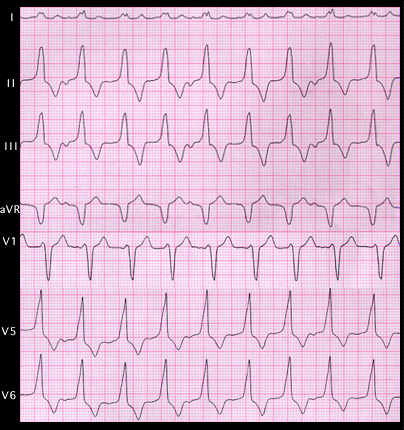Ventricular tachycardia originating in the right ventricular outflow tract constitutes a second form of ventricular tachycardia that occurs in younger individuals without obvious heart disease. In this situation, ventricular depolarization is directed inferiorly and to the left, resulting in a QRS complex that shows left bundle branch block with an inferiorly directed frontal plane axis.

This ECG is from a 30 year old female with a history of palpitations but no known heart disease. It shows a wide complex tachycardia with a rate of 100 beats per minute. The duration of the QRS complex is 0.16 seconds and there is left bundle branch block with a frontal plane axis of +85 degrees. The P waves are inverted in leads II and III and upright in lead aVR with a frontal plane axis is -90 degrees. This indicates that they are superiorly oriented However. Note that they are not related to the QRS complexes in a 1:1 fashion. This indicates that they are not the result of 1:1 VA conduction
